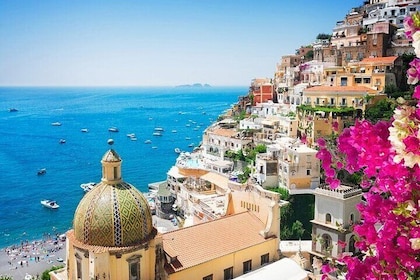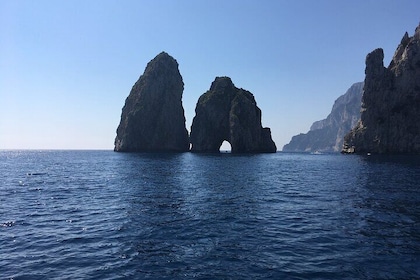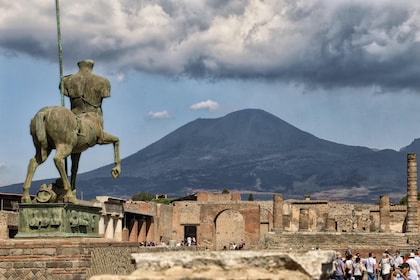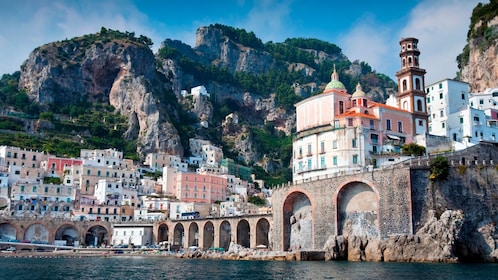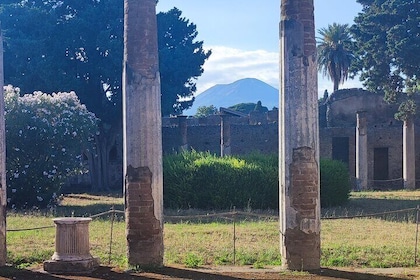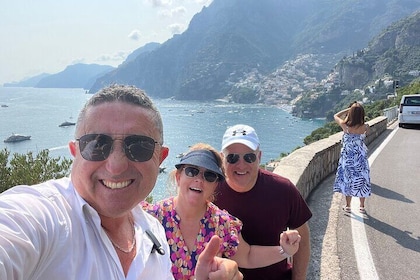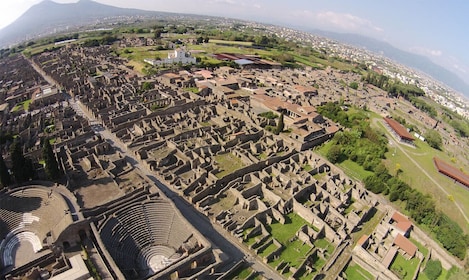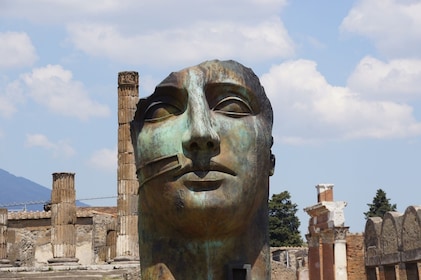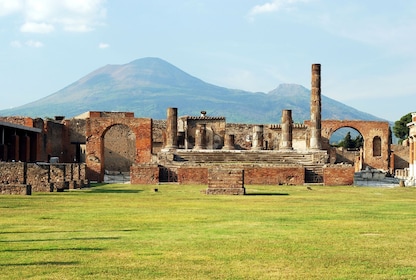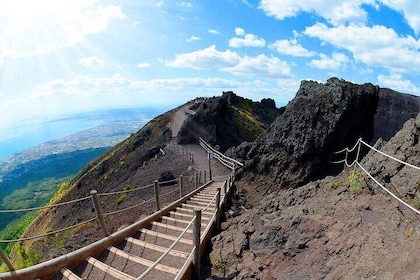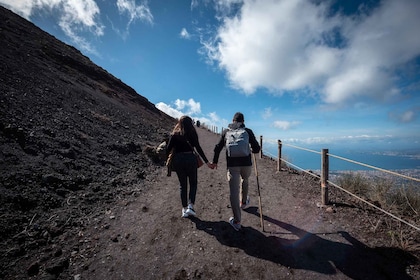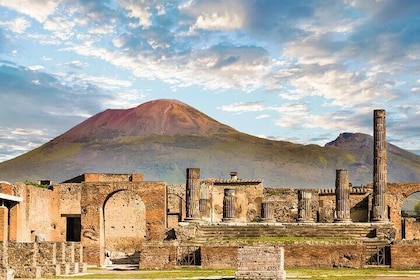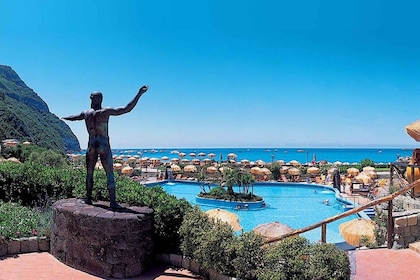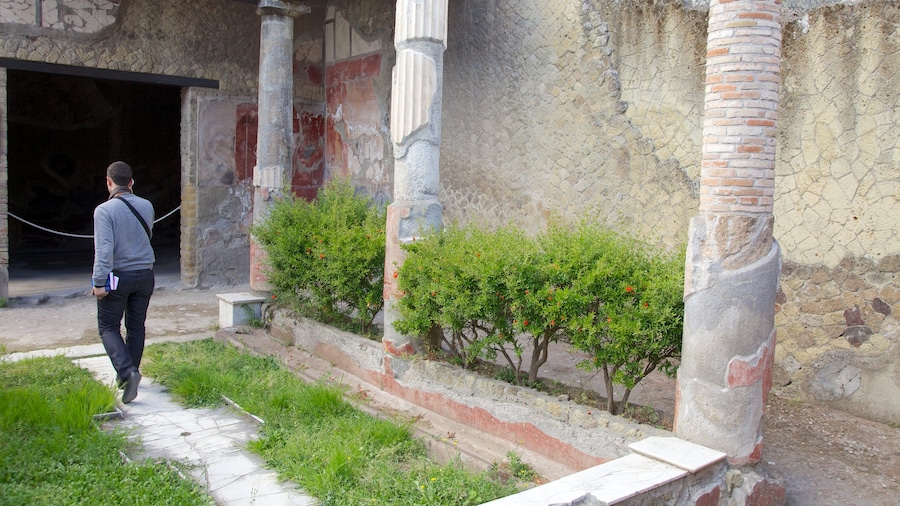Climb this volcano for arresting views over the bay of Naples before exploring the ancient ruins of Pompeii, the city Vesuvius destroyed.
Mount Vesuvius stands nine kilometres east of Naples, dominating the skyline. In 79 AD, this 1200-metre volcano erupted, covering the town of Pompeii in ash and soot, and simultaneously taking the lives of thousands of people. The area around the volcano is now a World Heritage Site and one of the most famous attractions around Naples. Peer into the summit crater of Vesuvius and step back in time to tread on the old Roman stone roads of the lost city.
The 30-minute hike up Vesuvius can be challenging, particularly in summer, but the spectacular views make it worth the effort. The volcano’s crater is 500 metres wide and 300 metres deep, and the inside is littered with volcanic rock and patches of grass. The only indication of the tremendous heat below is the steam gently wafting up from the ground.
Just eight kilometres from Mount Vesuvius is the city of Pompeii, lost for 1500 years when it was engulfed in 6 metres of ash after the eruption in 79 AD. The eruption preserved the city perfectly, and visitors can view intact frescoes, mosaics, fountains, household items and even mummified remains of people and animals that were preserved by the heat and ash. An amphitheatre that seats 20,000 people, a gymnasium with a pool in the middle, a theatre, public baths and various other fascinating structures within the site tells of an ancient but well-civilised city.
Mount Vesuvius is easily accessible from Naples. Driving takes about 40 minutes, while buses leave regularly from Piazza Piedigrotta and Piazza di Garibaldi in Naples. Wear comfortable shoes as there are many tiny rocks during the hike up Vesuvius while the streets of Pompeii are cobblestoned. If you're driving, be extra careful as the roads around Vesuvius can be narrow, winding and poorly signed. A paid car park is located at the base of the mountain. There are no restaurants on the mountain, but there are snack bars selling drinks.





